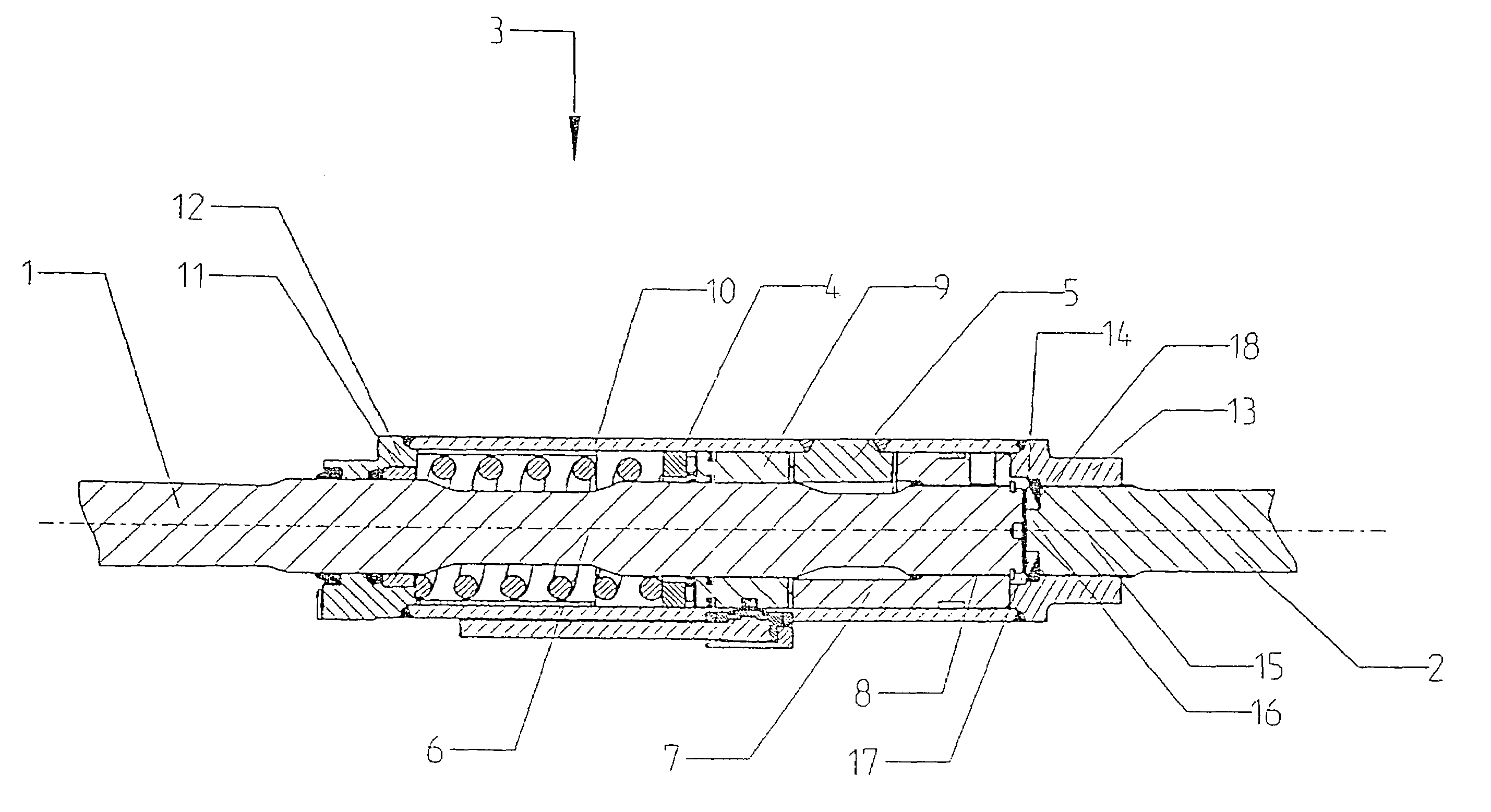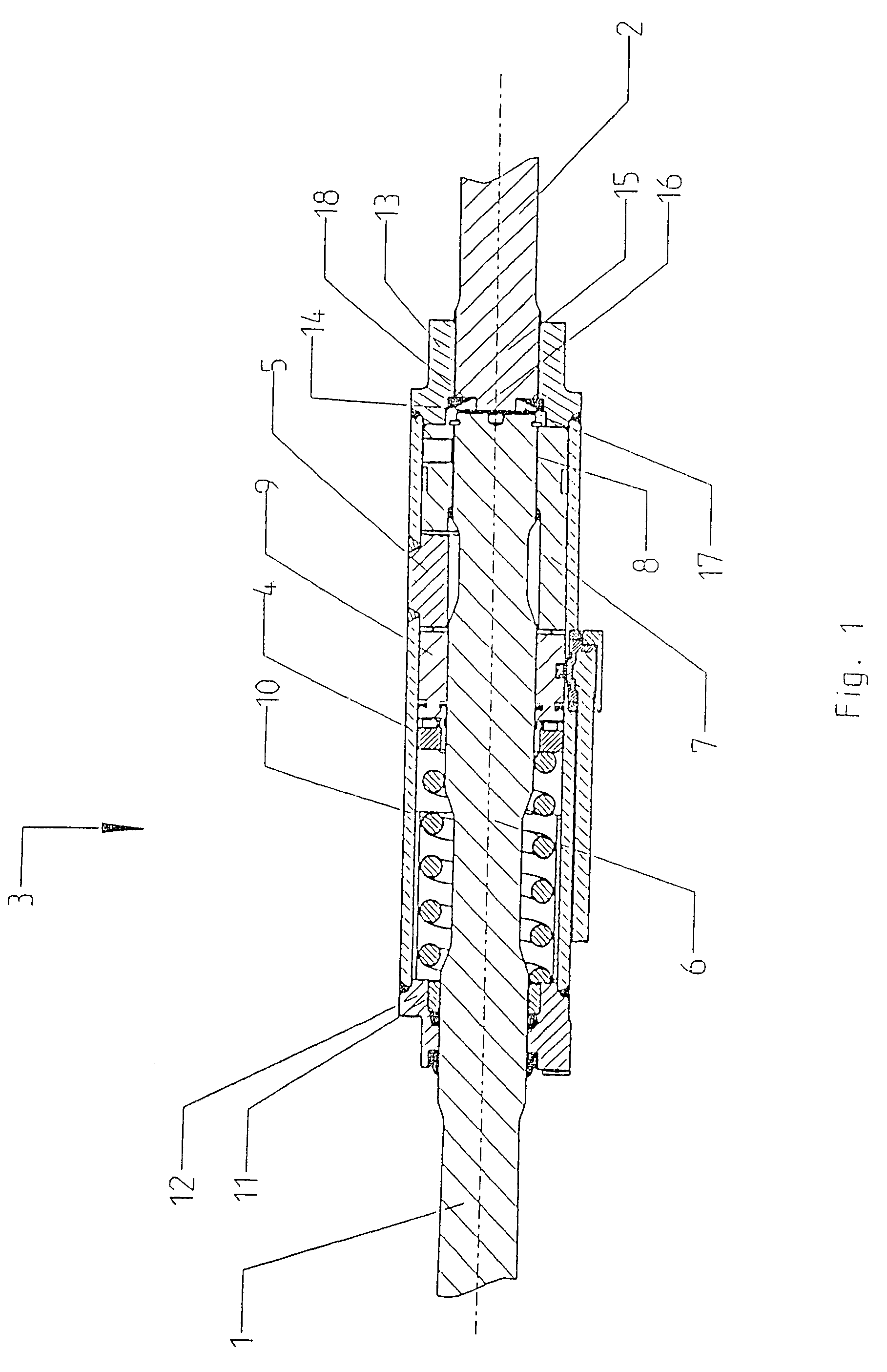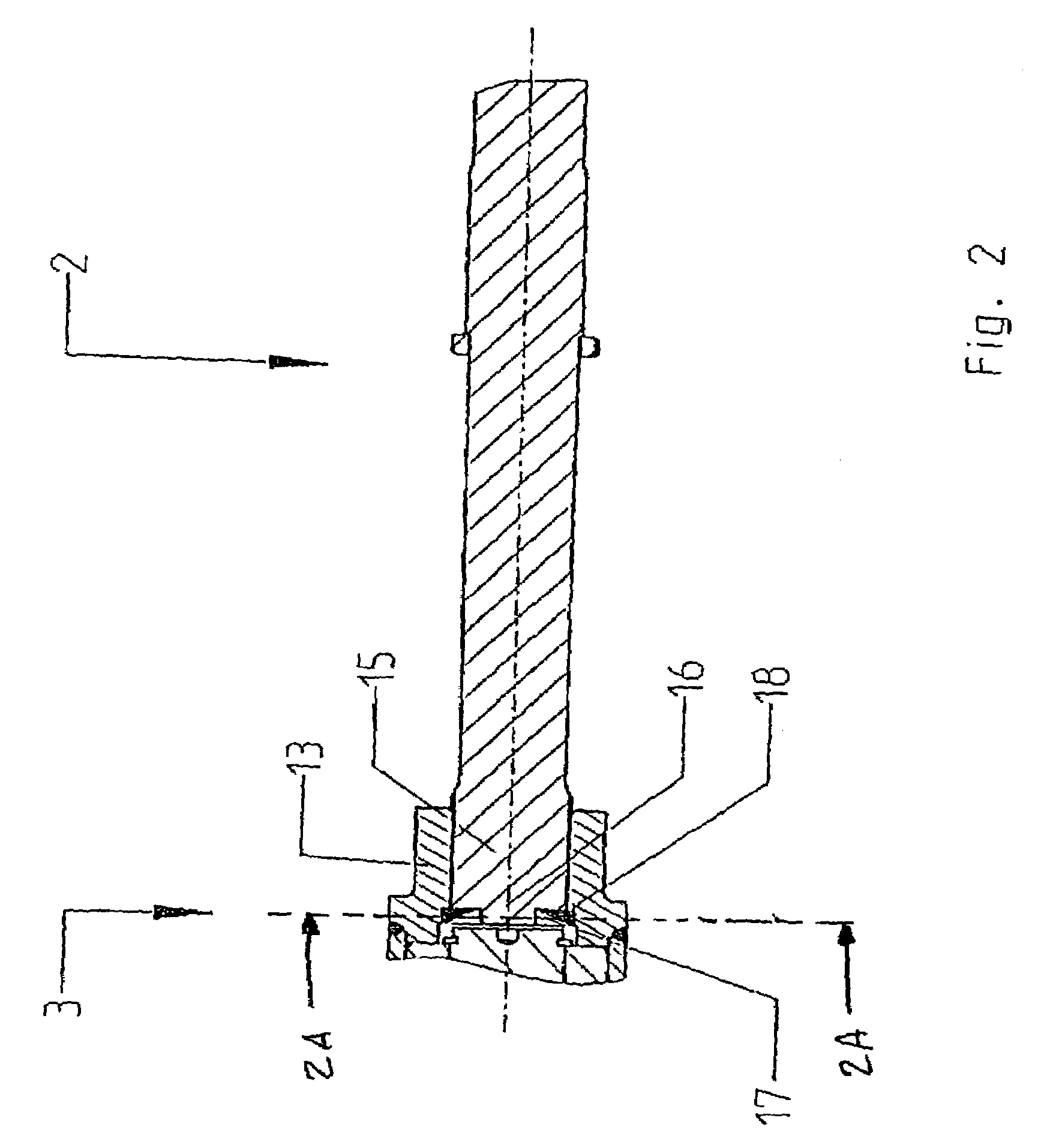Split stabilizer and process for establishing a toothed connection of the outer rotary part to one of the two stabilizer parts
a technology of stabilizer and rotary part, which is applied in the direction of couplings, manufacturing tools, transportation and packaging, etc., can solve the problems of unsuitable vehicles, complicated manufacturing technology of individual parts, and further increase of manufacturing technological difficulties, so as to simplify the design of the connection
- Summary
- Abstract
- Description
- Claims
- Application Information
AI Technical Summary
Benefits of technology
Problems solved by technology
Method used
Image
Examples
Embodiment Construction
[0026]Referring to the drawings in particular, the two FIGS. 1 and 2 show a split stabilizer comprising a first stabilizer part 1 and a second stabilizer part 2, the two being connected to one another via a clutch generally designated 3. The clutch 3 comprises an outer rotary part 4 in the form of a cylindrical housing with a rotary wing 5, which is rotating in unison and is directed inwardly, and with an inner rotary part 6 with an outwardly directed rotary wing 7. The inner rotary part 6 and its outwardly directed rotary wing 7 are connected to one another, rotating in unison, by means of teeth 8. Both rotary wings 5 and 7 are located on a common radial plane and form between them two opposite coupling spaces. A coupling sleeve 9 is guided on the inner rotary part 6 with two conical coupling claws in an axially displaceable manner, the coupling claws engaging the two free coupling spaces of the rotary wings 5 and 7. The coupling sleeve 9 is acted on by the force of a compression s...
PUM
| Property | Measurement | Unit |
|---|---|---|
| temperature | aaaaa | aaaaa |
| pressure | aaaaa | aaaaa |
| area | aaaaa | aaaaa |
Abstract
Description
Claims
Application Information
 Login to View More
Login to View More - R&D
- Intellectual Property
- Life Sciences
- Materials
- Tech Scout
- Unparalleled Data Quality
- Higher Quality Content
- 60% Fewer Hallucinations
Browse by: Latest US Patents, China's latest patents, Technical Efficacy Thesaurus, Application Domain, Technology Topic, Popular Technical Reports.
© 2025 PatSnap. All rights reserved.Legal|Privacy policy|Modern Slavery Act Transparency Statement|Sitemap|About US| Contact US: help@patsnap.com



